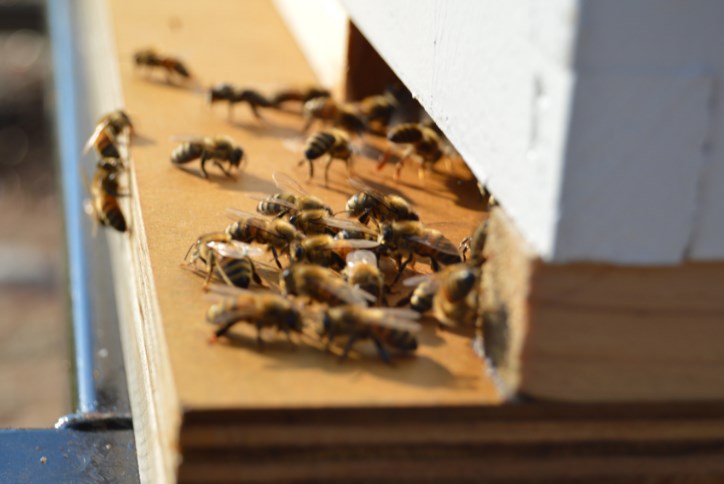
13 September . 2018
Sweetwater celebrates National Honey Month in September
September is National Honey Month, and that makes it an extra-sweet time of the year at Sweetwater.
Many people might not realize it, but Sweetwater is home to about 750,000 honeybees, living in six hives situated amid 700 acres of natural open space in the community. Sweetwater’s hives are maintained in partnership with Round Rock Honey, as part of our commitment to live in harmony with the surrounding natural environment.
Nearly 30 years ago, the National Honey Board declared September as National Honey Month, because that’s when the majority of honey is harvested in the United States. At Sweetwater, we harvested our honey a little earlier, in late August, and this year’s harvest was the best since we began our partnership with Round Rock Honey in 2016.
In celebration of National Honey Month, here are some fun facts about our local Sweetwater bees, and bees in general:
- In spring, the queen bee begins laying about 1,000 eggs a day. By the time she finishes in late July, she will have laid more than 800,000 eggs.
- Each egg takes 21 days to hatch. Bees emerge full-grown and ready to work.
- Bees live about one month on average.
- Worker bees spend the first two weeks of their lives inside, helping to feed the queen and cleaning the hive. They spend the final two weeks outside, foraging for pollen and nectar.
- A worker bee flies about 5,000 miles outside before it dies.
- Bees mix the nectar they gather with enzymes inside their abdomens, creating a mixture that will eventually become honey. Each flap of their wings creates a mixing motion.
- In the hive, bees place the nectar-enzyme mixture into cells. They use the flapping action of their wings to reduce the humidity level of the mixture from 90% to 18%. When it reaches the ideal level, they seal it with a wax cap, and it becomes honey.
- Bees make “bee bread” for food. This mixture of pollen (protein) and honey (carbohydrate) provides the perfect nutritional balance.
- Sweetwater’s bees belong to the species Apis mellifera, or western honeybee, prized for its docile temperament and prolific honey production.
- It’s actually easy to avoid getting stung by a bee. See these tips.
Learn more about Sweetwater’s partnership with Round Rock Honey.